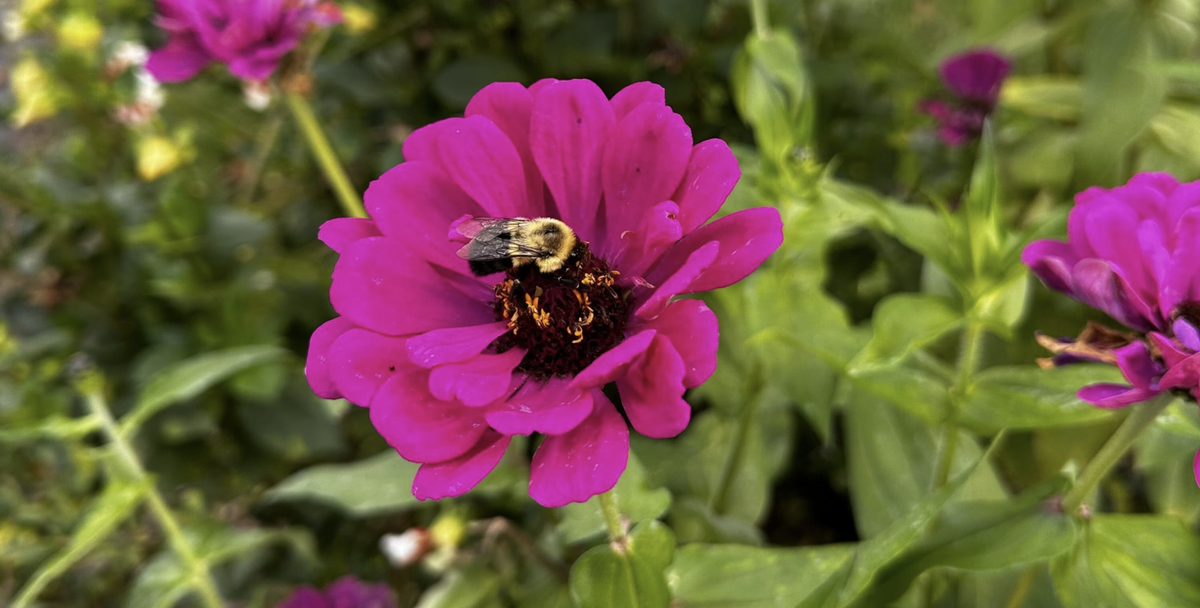Spring to Life In and Around Burlington
Plan your garden and your outdoor adventures to make the most of the warmer weather and longer daylight hours.

By John Keeley
Spring is many people’s favorite season, with good reason. The days get longer, and there is time to go outdoors after work or school.
Warmer temperatures mean you don’t need to bundle up in multiple layers of bulky clothes. But for many, the best part is the return to life of our deciduous and herbaceous plants that spent the winter in dormancy.
In early spring the first signs begin to appear. Pussy willows, nondescript the rest of the year, produce their fuzzy buds. In the swamps, skunk cabbage emerges. Red maples follow shortly thereafter with their bright red buds. Then quickly, plants begin to awaken, many with colorful flowers that help one forget the months of black and white that mark winter in New England.
Soon it is time to start working in your garden or landscaping your yard. When possible, it is best to landscape with species native to the area. Many pollinators only utilize a single species or genus of plant for feeding and egg-laying, and their survival depends on these plants. Songbirds, like migrating warblers, depend on the specialized caterpillars of moths and butterflies for food to fuel their migration and breeding. Non-native plants do not provide the right nutrition for their specific needs.
It can be more difficult finding native species than the non-native ornamentals you would typically find at a big box store, or even a local nursery, but it is important to try to plant some natives when possible. When shopping at a nursery, ask for natives.
When in doubt, a quick web search will help you determine a plant’s native range. One great resource in the area is the Native Plant Trust. In addition to selling native plants, it’s a fun place to visit. Not far from Burlington are a few other places where you can appreciate spring’s flowers and foliage, many of which are free. Here's a list, compiled in part by the Burlington Garden Club:
- The Acton Arboretum, which is free to visit, has an orchard loop and a wildflower loop.
- Few places in Massachusetts are as stunning in spring as Mount Auburn Cemetery on the Cambridge/ Watertown line. If you haven’t been, you’re missing an incredible sight.
- The Arnold Arboretum in Jamaica Plain is another free outdoor plant museum. While famous for its Mother’s Day “Lilac Sunday,” any spring visit is worthwhile.
- Though pricey, a visit to Garden in the Woods in Framingham is a great way to see beautiful native plants.
- Further out in Boylston, the New England Botanic Garden at Tower Hill is a gorgeous and peaceful place to visit. There is an admission fee for non-members.
- Berkshire Botanical Gardens in Stockbridge and Coastal Maine Botanical Gardens in Boothbay Harbor are a bit of a drive but worth the trip.
Of course, you don’t need to leave Burlington to find spring beauty. Flowering trees, shrubs and wildflowers can be found in any of the open spaces in Burlington. Mary Cummings Park has a pollinator meadow full of native flowers that bloom throughout the spring. If you walk through any of the other conservation areas in town you will find wildflowers, flowering shrubs, and trees. While you’re there, be sure to take pictures and send them to be featured in the Buzz!
Wherever you go, get out and enjoy spring. It was a long winter!
This story originally appeared in Buzz Magazine: Spring Edition, 2025.




